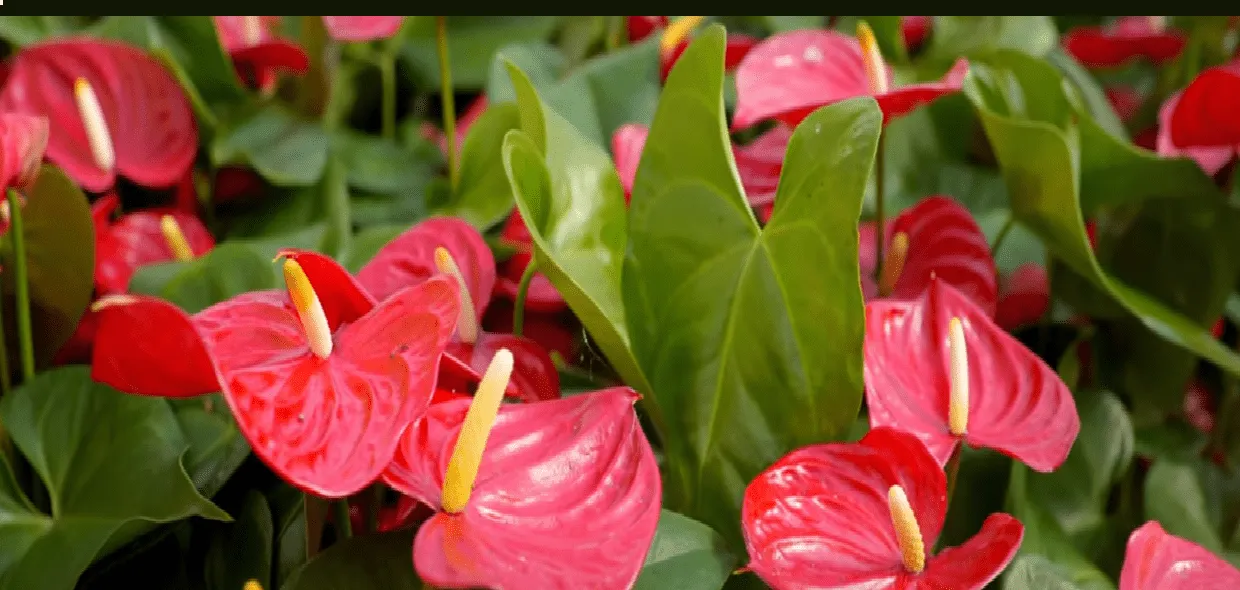
Welcome to the world of Anthuriums, those stunning plants with glossy leaves and vibrant spathes that add a touch of tropical beauty to your indoor spaces. However, if you’ve noticed your Anthurium leaves turning yellow, don’t worry! In this beginner-friendly guide, we’ll explore the common reasons behind yellowing leaves and how to keep your Anthuriums thriving.
Causes of Yellowing Leaves:
Overwatering:
- Let’s talk about watering. Sometimes, we love our plants so much that we give them too much water. When the soil is always wet, the roots can’t breathe, and this can make the leaves turn yellow. It’s like when we drink too much water; it’s not good for us, right?
- Solution: Check if the soil feels soggy. If it does, let it dry out a bit before watering again. Anthuriums like a drink, but they don’t want to be swimming in water all the time!
Underwatering:
- On the flip side, underwatering is when we forget to give our plants enough water. Plants depend on water, Just like we do, for their well-being. When they don’t get enough, their leaves can turn yellow too.
- Solution: Check the soil regularly. If it’s dry about an inch deep, it’s time to give your Anthurium a good drink. But don’t drown it—just enough to moisten the soil.
Not Enough Food (Nutrient Deficiency):
- Imagine if we only ate bread every day without any vegetables or fruits. We wouldn’t get all the good stuff our bodies need, right? Plants are the same. Sometimes, they need extra food, especially something called nitrogen, which helps them stay green.
- Solution: Feed your Anthurium with plant food. You can find special plant food at the store. Just follow the instructions on the package, and your plant will thank you with lush, green leaves!
Not Enough Light:
- Plants love sunlight, but they don’t want to get sunburned! If your Anthurium is in a dark corner, it might not be getting enough light. This can make its leaves turn pale or yellow.
- Solution: Move your Anthurium to a brighter spot, but not directly under the sun. They like gentle, filtered sunlight. It’s like giving them a sunny vacation without the sunburn!
Too Hot or Too Cold:
- Imagine if we had to live in an oven or a freezer—that wouldn’t be comfortable, right? Plants feel the same way. If it’s too hot or too cold, they get stressed, and their leaves can turn yellow.
- Solution: Keep your Anthurium in a cozy spot with a stable temperature. They like it around room temperature, not too hot or too cold. It’s like giving them a perfect climate to thrive in!
Pests and Diseases:
- Sometimes, uninvited guests like bugs or diseases can bother our plants. They can suck the life out of them, making the leaves yellow and sad.
- Solution: Check your Anthurium carefully for any signs of bugs or strange spots on the leaves. If you find any, there are special sprays you can use to keep those pests away and help your plant stay healthy and happy.
Identifying the Problem:
Now that you know some common reasons for yellowing leaves, take a close look at your Anthurium. Are the leaves just yellow, or do they have spots or weird bugs? Understanding what’s happening can help you fix the problem faster.
Preventative Measures:
Once you’ve identified the cause, it’s time to take action! Adjust your watering routine, give your plant some food, find a better spot with more light, keep it cozy, and watch out for those pesky pests. Your Anthurium will thank you with fresh, green leaves!
Conclusion:
Yellow leaves on your Anthurium can be a sign that your plant needs a little extra love and attention. By understanding the reasons behind yellowing leaves and taking simple steps to care for your plant, you can enjoy lush, green foliage and the beauty of your Anthurium for years to come. Happy gardening!